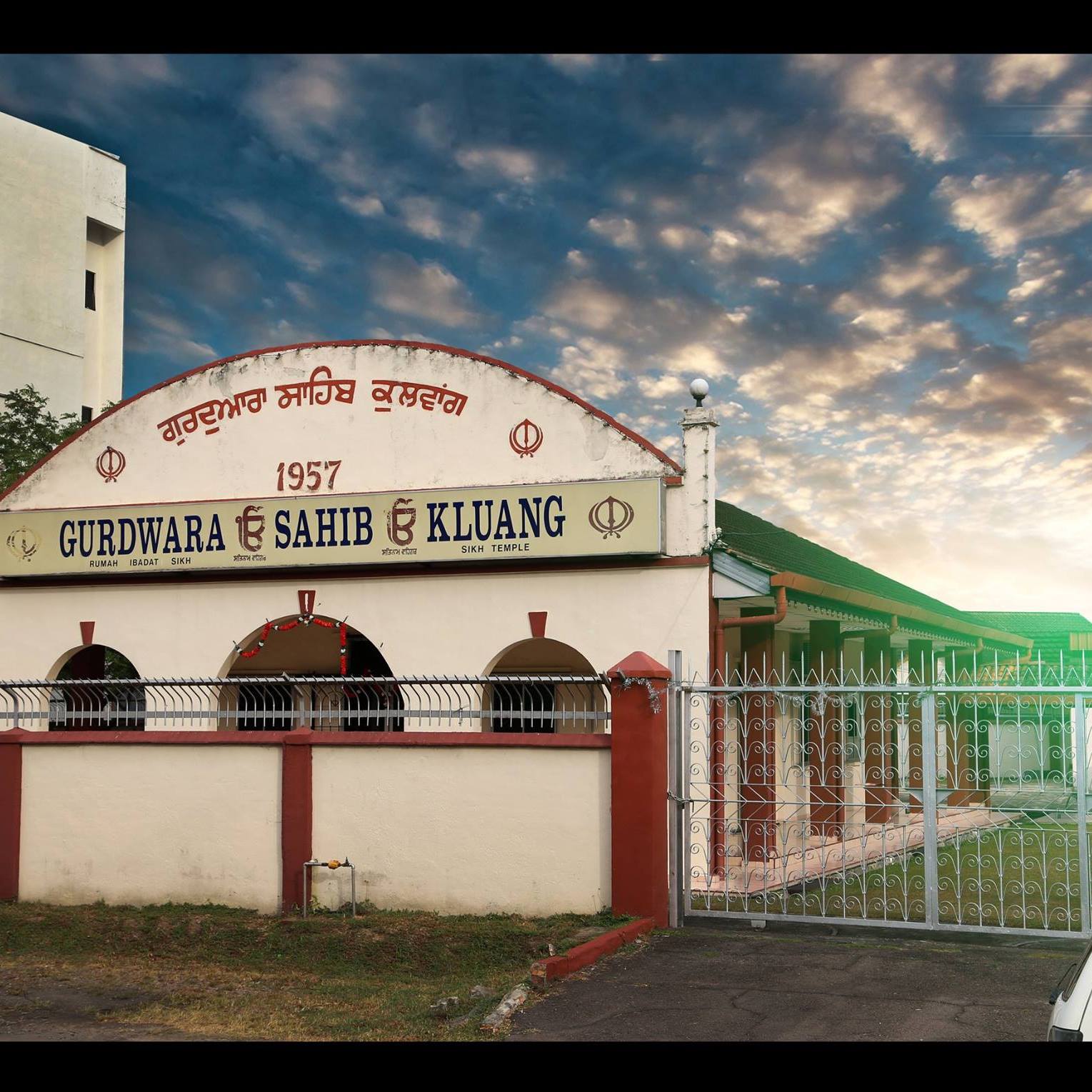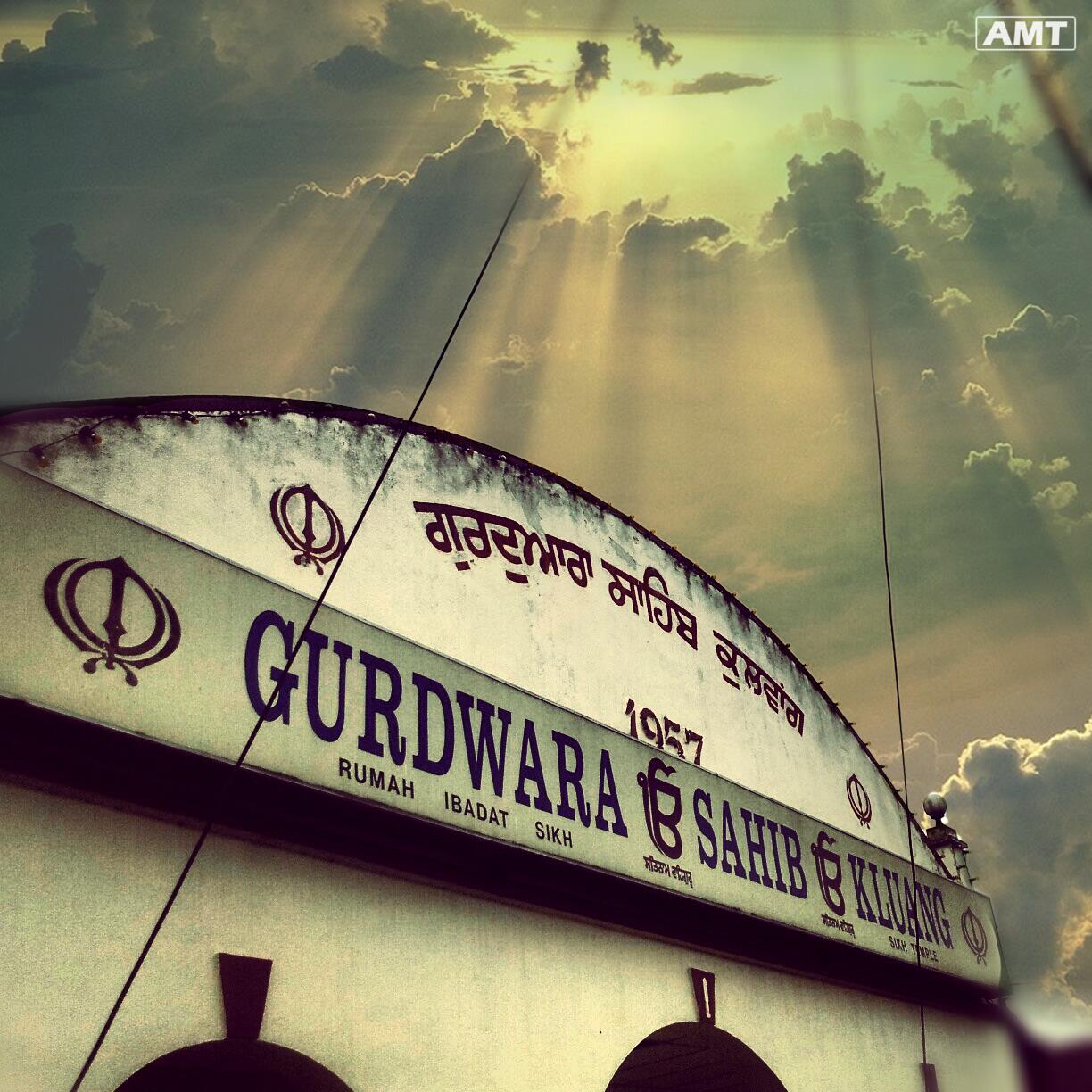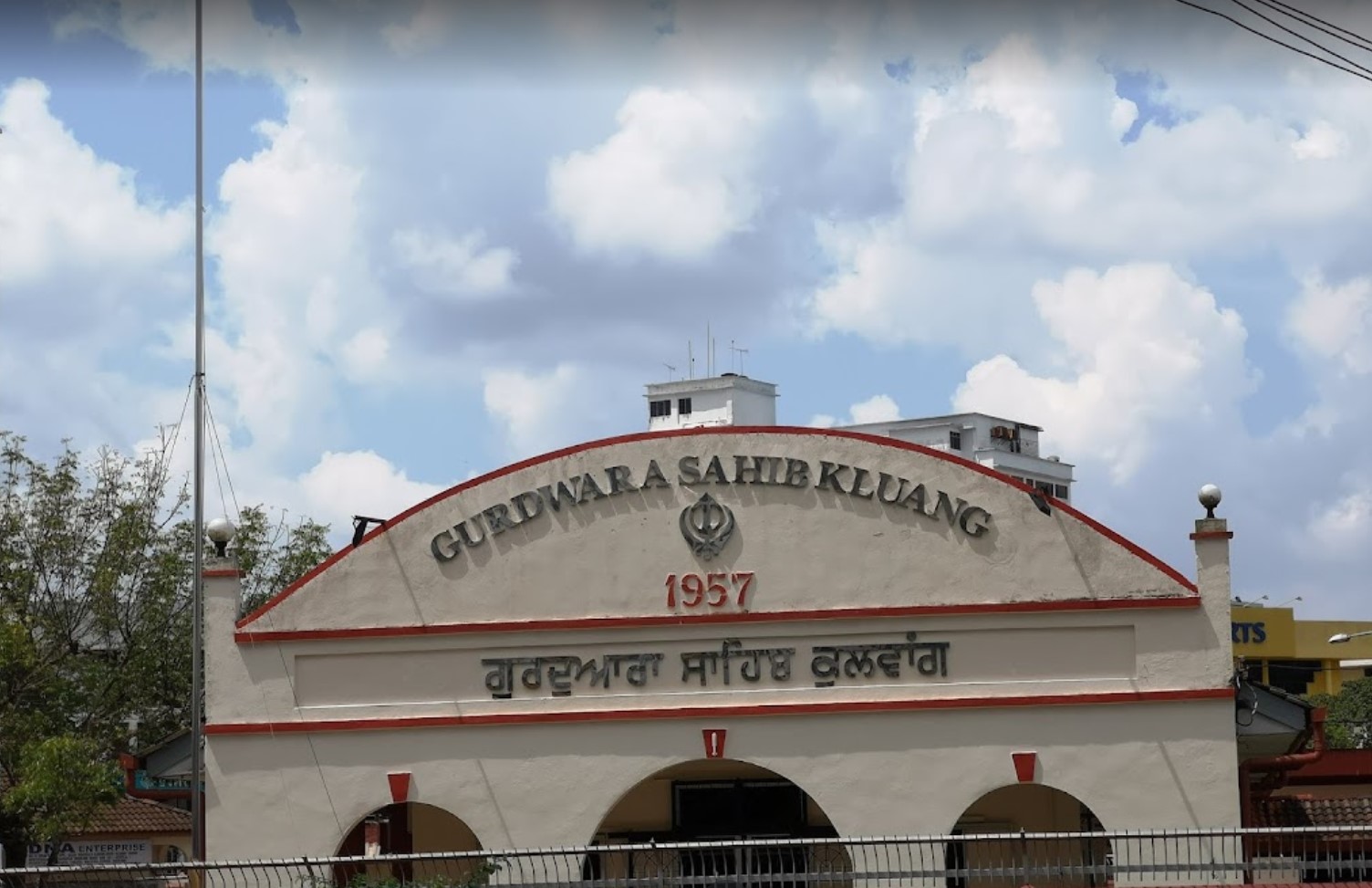Gurudwara Sahib Kluang, Johor
In the 1930’s, Kluang was a small railway town. There were about 100 Sikhs in Kluang employed in the Police Force while others were bullock cart owners or dairy farmers. Toki Sunder Singh Sidhu (Village Chandriwala, Faridkot), a prominent resident of Kluang, was the main driving force to rally the Sikh community to build a Gurdwara Sahib in Kluang.
Through the Senior Police Officer, the Sikhs applied for a piece of land to build their Gurdwara. The District Officer in Kluang allocated a piece of land in Jalan Mersing about 100 yards across the river Mengkibol. The land was unfortunately in a flood prone area. The Sikhs decided to raise the level of the land. Sardar Jita Singh Sidhu, a lorry contractor, filled up the low land with earth and stones, with the assistance of the Sikhs in Kluang. Toki Sunder Singh took the lead in raising donations from the Sikh community. A simple wooden Gurdwara building was constructed on stilts with an attap roof. Some of the Sikhs volunteered to assist the skilled paid workers to complete this first Gurdwara building.
By the mid 1950’s the Gurdwara Sahib building had fallen into disrepair. The Sikhs made an appeal to the Johor State Government to grant a free hold title to the existing piece of land to construct a new Gurdwara building. In 1957 the Johor State Government created a reserve for the Sikh Gurdwara vide Government Gazette GN 184 dated 31st October 1957, Lot Number 485.
The Sikh community of Kluang contributed cash for the construction of the new Gurdwara building. The Gurdwaras in Johor and Singapore also gave donations. The Sikh bullock carters in Kluang raised the level of the land to about two feet higher than Jalan Mersing. More than 1500 bullock cartloads were used to raise the level of the land. Sant Baba Sohan Singh Ji of Malacca laid the foundation stone of the new single storey Gurdwara building. The cost of the new building came to RM40,000.00. It was declared open by the Sikh sangat in November 1957.
There was a very big flood in Kluang in 1969. The river overflowed by 7 to 10 feet and much damage was caused to property. The fast waters of the flood broke down the front and back walls of the perimeter fence. The Gurdwara records and files were damaged and some equipment was lost. The Granthi Sahib, Giani Gian Singh, a courageous fellow, carried the Holy Book, Sri Guru Granth Sahib Ji and some rumalas into the ceiling of the Gurdwara Sahib building. He stayed there for 1 to 2 days until the floodwaters subsided.
By the early 1970’s, there were about 80 Sikh families in Kluang consisting of army personnel, dairy farmers, shopkeepers, Government servants, watchmen and teachers. This Gurdwara was a very active religious and social centre. There were about 40 Sikh children studying Gurmukhi on weekends in the Gurdwara. The Granthi at this time was Giani Prem Singh Wadda Ghar who made it a point to give short interesting lectures followed by kirtan. The next Granthi was Giani Giani Jang Singh also motivated the Sikhs in Kluang to participate in the Gurmukhi class and kirtan programmes. He encouraged the performance of sewa by organising the cleaning of the Gurdwara premises regularly. He always greeted visitors with a warm welcome. He was also instrumental in getting a new larger langgar hall built for the ladies and children.
The 1980’s experienced a dwindling Sikh community in Kluang as most of the Sikhs left for other larger towns. By 1990, only 40 Sikh families were left in Kluang.
The Management Committee comprises of the President, Vice President, Secretary, Treasurer and five committee members.
There are presently about 20 Sikh families who participate in the religious functions in this Gurdwara. The weekly prayers are held every Sunday morning from 10.00a.m. to 12.00p.m. There are also 25 students who study Gurmukhi twice weekly in the Gurdwara.
Courtesy:
Sikh Gurudwaras in Malaysia&Singapore
Saran Singh Sidhu AMN,PNM,FRNS







